Archives
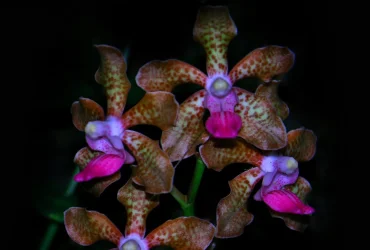 v13i2.332
v13i2.332ISSN: 1800-427X (printed)
eISSN: 1800-427X (online)
DOI:10.47605/tapro.v13i2.332
Submitted date: 30 September 2024
Accepted date: 24 November 2024
Published date: 30 November 2024
Pp. 69–81. Pls. 12–19.
NOTES ON THE Ophisops beddomei COMPLEX (SQUAMATA: LACERTIDAE) WITH THE DESCRIPTION OF A NEW ALLIED CRYPTIC SPECIES FROM WESTERN INDIA
Harshil Patel*, Raju Vyas, Tejas Thackeray, Saunak Pal & Zeeshan A. Mirza
*Corresponding author. E-mail: harshilpatel121@gmail.com
Abstract
The lacertid Ophisops beddomei was considered to be widely distributed in the northern and central Western Ghats, and some parts of western India. Recent studies, however, provide evidence of it being a species complex that harbours several morphologically cryptic species. In an attempt to resolve this species complex, we provide a re-description of O. beddomei sensu stricto based on type specimens and fresh material from near the type locality. Additionally, we describe a new species based on a series of 15 specimens from the states of Gujarat and Maharashtra in western India. The new species is allied to O. beddomei and can be diagnosed from all its congeners by the following suite of characters: a small-sized Ophisops (adult, SVL up to 36 mm); upper eyelid movable; supranasal fused with nasal; two frontonasals; prefrontals not in contact; enlarged tympanic scale present; 46–53 dorsal scales; 28–31 scales at mid-body; 19–21 lamellae underneath the fourth toe; six chin shields; 15–19 scales between symphysis of chin shields and ventral plates; large mental scale, extending beyond first supralabial; 8–11 femoral pores on either side interrupted by 0–1 poreless scales in males and 3–4 poreless scales in females; and subtle colour pattern differences. Molecular data for the mitochondrial cytochrome b gene further supports the distinctiveness of the new species and shows an uncorrected pairwise sequence divergence of 8% from O. beddomei sensu stricto. These are among the only lacertids that inhabit high-elevation plateaus and deciduous forests in the Western Ghats and surrounding hill ranges. The findings also indicate that many other similar habitats may harbour as yet undescribed endemic taxa.
Key words : Endemic, hill ranges, Lacerta, plateau, Snake-eyed lizard, taxonomy
Section Editor: Thasun Amarasinghe
LSID:urn:lsid:zoobank.org
eISSN: 1800-427X (online)
DOI:10.47605/tapro.v13i2.332
Submitted date: 30 September 2024
Accepted date: 24 November 2024
Published date: 30 November 2024
Pp. 69–81. Pls. 12–19.
NOTES ON THE Ophisops beddomei COMPLEX (SQUAMATA: LACERTIDAE) WITH THE DESCRIPTION OF A NEW ALLIED CRYPTIC SPECIES FROM WESTERN INDIA
Harshil Patel*, Raju Vyas, Tejas Thackeray, Saunak Pal & Zeeshan A. Mirza
*Corresponding author. E-mail: harshilpatel121@gmail.com
Abstract
The lacertid Ophisops beddomei was considered to be widely distributed in the northern and central Western Ghats, and some parts of western India. Recent studies, however, provide evidence of it being a species complex that harbours several morphologically cryptic species. In an attempt to resolve this species complex, we provide a re-description of O. beddomei sensu stricto based on type specimens and fresh material from near the type locality. Additionally, we describe a new species based on a series of 15 specimens from the states of Gujarat and Maharashtra in western India. The new species is allied to O. beddomei and can be diagnosed from all its congeners by the following suite of characters: a small-sized Ophisops (adult, SVL up to 36 mm); upper eyelid movable; supranasal fused with nasal; two frontonasals; prefrontals not in contact; enlarged tympanic scale present; 46–53 dorsal scales; 28–31 scales at mid-body; 19–21 lamellae underneath the fourth toe; six chin shields; 15–19 scales between symphysis of chin shields and ventral plates; large mental scale, extending beyond first supralabial; 8–11 femoral pores on either side interrupted by 0–1 poreless scales in males and 3–4 poreless scales in females; and subtle colour pattern differences. Molecular data for the mitochondrial cytochrome b gene further supports the distinctiveness of the new species and shows an uncorrected pairwise sequence divergence of 8% from O. beddomei sensu stricto. These are among the only lacertids that inhabit high-elevation plateaus and deciduous forests in the Western Ghats and surrounding hill ranges. The findings also indicate that many other similar habitats may harbour as yet undescribed endemic taxa.
Key words : Endemic, hill ranges, Lacerta, plateau, Snake-eyed lizard, taxonomy
Section Editor: Thasun Amarasinghe
LSID:urn:lsid:zoobank.org
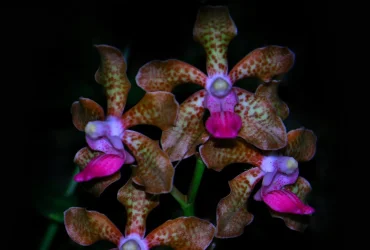 v13i2.331
v13i2.331ISSN: 1800-427X (printed)
eISSN: 1800-427X (online)
DOI:10.47605/tapro.v13i2.331
Submitted date: 17 October 2023
Accepted date: 15 October 2024
Published date: 30 November 2024
Pp. 62–68. Pls. 9–11.
ON THE SYSTEMATIC POSITION OF THE WESTERN GHATS BRONZEBACK Dendrelaphis chairecacos (BOIE, 1827) (SQUAMATA: COLUBRIDAE) WITH RANGE EXTENSION TO GUJARAT
Dikansh S. Parmar*, Mehul N. Thakur, Amrut S. Singh, S.R. Ganesh & Gernot Vogel
*Corresponding author. E-mail: Ophiophagus_hannah10@yahoo.com
Abstract
We report on the molecular phylogenetic position of the Western Ghats bronzeback, Dendrelaphis chairecacos (Boie, 1827), and new sightings from Dangs in Gujarat and Goa State in western India. Based on COI genes sequenced from two samples from Goa and the Dangs, we report that D. chairecacos was 5.59–5.60% (the total percentage of divergence is 5.77%), i.e. with an intraspecific variation of 0.67% nearly about 0.01%, divergent from D. tristis (Indian sample). Our record from the Dangs extends its range northwards by 350 km (from Satara) in the Western Ghats. We also used the geo-referenced and identified photo vouchers posted in citizen science portals to conduct a MaxEnt species distribution modelling for D. chairecacos for the first time. Our analysis run based on 27 data points including the new Dangs record and a previously published doubtful record from Yercaud (Southern Eastern Ghats), showed that the probability of occurrence in both these regions was very low (<20%). Areas in Malabar and the Konkan Coastal Plains from Kanyakumari to the Goa Gap had the highest probability of occurrence (>75%). We uphold the taxonomic ambiguity of the individual from Yercaud lacking loreal scale (as D. cf. chairecacos) and maintain that D. chairecacos s.str. is known only from the Western Ghats. We also re-identified a specimen (ZSI-R-22185) from Goa as D. chairecacos, which may be its earliest precise record from Goa (in 1969). Thus far based on nine preserved and two uncollected specimens mostly from the southern parts of its range, D. chairecacos stands better characterised based on 12 more live specimens, all from the northern parts of its range.
Key words : bronzeback, Gujarat, Konkan Coast, MaxEnt modelling, new record, sequences, Yercaud
Section Editor: Suranjan Karunarathna
eISSN: 1800-427X (online)
DOI:10.47605/tapro.v13i2.331
Submitted date: 17 October 2023
Accepted date: 15 October 2024
Published date: 30 November 2024
Pp. 62–68. Pls. 9–11.
ON THE SYSTEMATIC POSITION OF THE WESTERN GHATS BRONZEBACK Dendrelaphis chairecacos (BOIE, 1827) (SQUAMATA: COLUBRIDAE) WITH RANGE EXTENSION TO GUJARAT
Dikansh S. Parmar*, Mehul N. Thakur, Amrut S. Singh, S.R. Ganesh & Gernot Vogel
*Corresponding author. E-mail: Ophiophagus_hannah10@yahoo.com
Abstract
We report on the molecular phylogenetic position of the Western Ghats bronzeback, Dendrelaphis chairecacos (Boie, 1827), and new sightings from Dangs in Gujarat and Goa State in western India. Based on COI genes sequenced from two samples from Goa and the Dangs, we report that D. chairecacos was 5.59–5.60% (the total percentage of divergence is 5.77%), i.e. with an intraspecific variation of 0.67% nearly about 0.01%, divergent from D. tristis (Indian sample). Our record from the Dangs extends its range northwards by 350 km (from Satara) in the Western Ghats. We also used the geo-referenced and identified photo vouchers posted in citizen science portals to conduct a MaxEnt species distribution modelling for D. chairecacos for the first time. Our analysis run based on 27 data points including the new Dangs record and a previously published doubtful record from Yercaud (Southern Eastern Ghats), showed that the probability of occurrence in both these regions was very low (<20%). Areas in Malabar and the Konkan Coastal Plains from Kanyakumari to the Goa Gap had the highest probability of occurrence (>75%). We uphold the taxonomic ambiguity of the individual from Yercaud lacking loreal scale (as D. cf. chairecacos) and maintain that D. chairecacos s.str. is known only from the Western Ghats. We also re-identified a specimen (ZSI-R-22185) from Goa as D. chairecacos, which may be its earliest precise record from Goa (in 1969). Thus far based on nine preserved and two uncollected specimens mostly from the southern parts of its range, D. chairecacos stands better characterised based on 12 more live specimens, all from the northern parts of its range.
Key words : bronzeback, Gujarat, Konkan Coast, MaxEnt modelling, new record, sequences, Yercaud
Section Editor: Suranjan Karunarathna
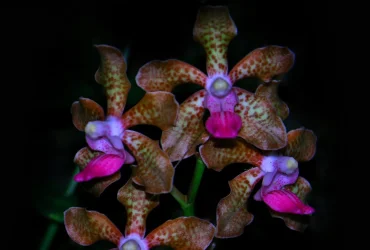 v13i2.330
v13i2.330ISSN: 1800-427X (printed)
eISSN: 1800-427X (online)
DOI:10.47605/tapro.v13i2.330
Submitted date: 23 May 2023
Accepted date: 30 September 2024
Published date: 30 November 2024
Pp. 48–61.
ENGLISH TRANSLATION OF THE ORIGINAL DESCRIPTIONS OF SNAKES DESCRIBED BY BOIE (1826)
Sean Otani* & Elmar Duensser
*Corresponding author. E-mail: otani-s@tottori-u.ac.jp
Abstract
Seven species of snakes described by Boie (1826) are currently recognized. They represent two families and six genera. Viperidae: Gloydius blomhoffii, and Colubridae: Hebius vibakari, Elaphe climacophora, E. quadrivirgata, Euprepiophis conspicillatus, Rhabdophis tigrinus, and Sibynophis geminatus. We provide the transcriptions and English translations of all seven original descriptions, which were originally written in Latin and German.
Key words : herpetology, Japan, linien, Rhineland foot
Section Editor: Patrick David
eISSN: 1800-427X (online)
DOI:10.47605/tapro.v13i2.330
Submitted date: 23 May 2023
Accepted date: 30 September 2024
Published date: 30 November 2024
Pp. 48–61.
ENGLISH TRANSLATION OF THE ORIGINAL DESCRIPTIONS OF SNAKES DESCRIBED BY BOIE (1826)
Sean Otani* & Elmar Duensser
*Corresponding author. E-mail: otani-s@tottori-u.ac.jp
Abstract
Seven species of snakes described by Boie (1826) are currently recognized. They represent two families and six genera. Viperidae: Gloydius blomhoffii, and Colubridae: Hebius vibakari, Elaphe climacophora, E. quadrivirgata, Euprepiophis conspicillatus, Rhabdophis tigrinus, and Sibynophis geminatus. We provide the transcriptions and English translations of all seven original descriptions, which were originally written in Latin and German.
Key words : herpetology, Japan, linien, Rhineland foot
Section Editor: Patrick David
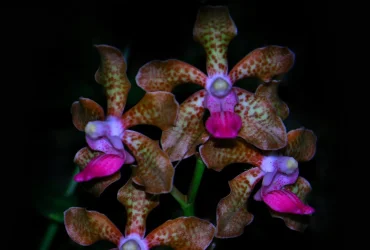 v13i2.329
v13i2.329ISSN: 1800-427X (printed)
eISSN: 1800-427X (online)
DOI:10.47605/tapro.v13i2.329
Submitted date: 15 October 2022
Accepted date: 15 October 2024
Published date: 30 November 2024
Pp. 39–47.
ARE VOLATILE ORGANIC COMPOUNDS THE SECRET TO VISITATIONS BY POLLINATORS IN THE FOOD DECEPTIVE ORCHID Vanda tessellata (ROXB.) HOOK. EX G. DON. (ORCHIDACEAE)?
R.S. Gunasekara*, K. Yakandawala, S. Jayakody, D.S.A. Wijesundara, R.M. Dharmadasa & W.A.I.P. Karunaratne
*Corresponding author. E-mail: kvrsgunasekara@wyb.ac.lk
Abstract
Vanda tessellata is an indigenous, endangered, and protected orchid species with a wide range of flower variations in Sri Lanka. The plant has high ornamental and medicinal values and therefore faces serious threats due to over-exploitation and habitat destruction. Thus, sound knowledge of pollination biology is important in the conservation and propagation of the species. The current study investigates the diurnal and nocturnal pattern of pollinators’ behaviour with the volatile fragrance profile of V. tessellata. Gas chromatography-mass spectrometry (GC-MS) analysis was carried out to identify the odour profile. The detailed GC-MS results produce 65 peaks of 36 volatile compounds. The diurnal pollinator, Xylocopa tenuiscapa (order Hymenoptera) and the nocturnal pollinator, Daphnis nerii (order Lepidoptera) visitations to V. tessellata flowers and the intensity of floral odours were well correlated proving the ability of V. Tesselatta flowers to attract both diurnal and nocturnal pollinators for successful cross-pollination.
Key words : Orchid, fragrance, odoriferous compounds, pollination
Section Editor: F.S. Robustelli della Cuna
eISSN: 1800-427X (online)
DOI:10.47605/tapro.v13i2.329
Submitted date: 15 October 2022
Accepted date: 15 October 2024
Published date: 30 November 2024
Pp. 39–47.
ARE VOLATILE ORGANIC COMPOUNDS THE SECRET TO VISITATIONS BY POLLINATORS IN THE FOOD DECEPTIVE ORCHID Vanda tessellata (ROXB.) HOOK. EX G. DON. (ORCHIDACEAE)?
R.S. Gunasekara*, K. Yakandawala, S. Jayakody, D.S.A. Wijesundara, R.M. Dharmadasa & W.A.I.P. Karunaratne
*Corresponding author. E-mail: kvrsgunasekara@wyb.ac.lk
Abstract
Vanda tessellata is an indigenous, endangered, and protected orchid species with a wide range of flower variations in Sri Lanka. The plant has high ornamental and medicinal values and therefore faces serious threats due to over-exploitation and habitat destruction. Thus, sound knowledge of pollination biology is important in the conservation and propagation of the species. The current study investigates the diurnal and nocturnal pattern of pollinators’ behaviour with the volatile fragrance profile of V. tessellata. Gas chromatography-mass spectrometry (GC-MS) analysis was carried out to identify the odour profile. The detailed GC-MS results produce 65 peaks of 36 volatile compounds. The diurnal pollinator, Xylocopa tenuiscapa (order Hymenoptera) and the nocturnal pollinator, Daphnis nerii (order Lepidoptera) visitations to V. tessellata flowers and the intensity of floral odours were well correlated proving the ability of V. Tesselatta flowers to attract both diurnal and nocturnal pollinators for successful cross-pollination.
Key words : Orchid, fragrance, odoriferous compounds, pollination
Section Editor: F.S. Robustelli della Cuna
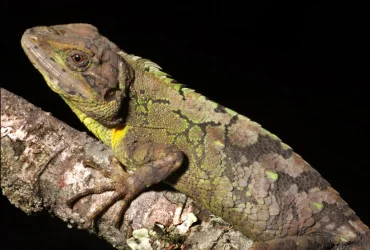 v13i1.328
v13i1.328ISSN: 1800-427X (printed)
eISSN: 1800-427X (online)
DOI:10.47605/tapro.v13i1.328
Submitted date: 17 June 2023
Accepted date: 30 April 2024
Published date: 30 May 2024
Pp. 35-38.
On news reports of the Ganges River dolphin (Platanista gangetica), Bangladesh
A.I. Barkat, R. Islam, S. Mallick & M. Rokonuzzaman*
*Corresponding author. E-mail: rokonuzzaman5128@gmail.com
The Ganges River dolphin, also known as the South Asian river dolphin or ‘Susu’, Platanista gangetica (Roxburgh, 1801) is present along the Ganges-Brahmaputra-Meghna and Karnaphuli-Sangu River systems and their tributaries, from the foothills of the Himalaya to the limits of the tidal zone in Nepal, India, and Bangladesh. The Ganges River dolphin is an obligate freshwater species, but its presence in the estuary waters of the Sundarbans mangrove forest of Bangladesh was verified. The fishermen on the Ganges River and its major tributaries in India have long practiced using dolphin oil as an attractant for certain catfish, and harpooning dolphins was outlawed in 1972, so is a rare occurrence now. However, it does not appear that dolphin deaths are decreasing. The river dolphin frequently gets entangled in fishing nets and mostly suffocates to death. The population of the species has been decreasing across its entire habitat, dropping from around 5000 individuals in 1982 to fewer than 2000 in 1997, and likely falling to around 1000 by 2003.
Section Editor: Daniel Gonzalez-Socoloske
eISSN: 1800-427X (online)
DOI:10.47605/tapro.v13i1.328
Submitted date: 17 June 2023
Accepted date: 30 April 2024
Published date: 30 May 2024
Pp. 35-38.
On news reports of the Ganges River dolphin (Platanista gangetica), Bangladesh
A.I. Barkat, R. Islam, S. Mallick & M. Rokonuzzaman*
*Corresponding author. E-mail: rokonuzzaman5128@gmail.com
The Ganges River dolphin, also known as the South Asian river dolphin or ‘Susu’, Platanista gangetica (Roxburgh, 1801) is present along the Ganges-Brahmaputra-Meghna and Karnaphuli-Sangu River systems and their tributaries, from the foothills of the Himalaya to the limits of the tidal zone in Nepal, India, and Bangladesh. The Ganges River dolphin is an obligate freshwater species, but its presence in the estuary waters of the Sundarbans mangrove forest of Bangladesh was verified. The fishermen on the Ganges River and its major tributaries in India have long practiced using dolphin oil as an attractant for certain catfish, and harpooning dolphins was outlawed in 1972, so is a rare occurrence now. However, it does not appear that dolphin deaths are decreasing. The river dolphin frequently gets entangled in fishing nets and mostly suffocates to death. The population of the species has been decreasing across its entire habitat, dropping from around 5000 individuals in 1982 to fewer than 2000 in 1997, and likely falling to around 1000 by 2003.
Section Editor: Daniel Gonzalez-Socoloske
Hubungi Kami
The ultimate aim of the journal is to provide an effective medium for communication of the latest and best scientific information.
Copyright © 2020 Taprobanica. All Rights Reserved
Jasa Pembuatan Website by IKT




